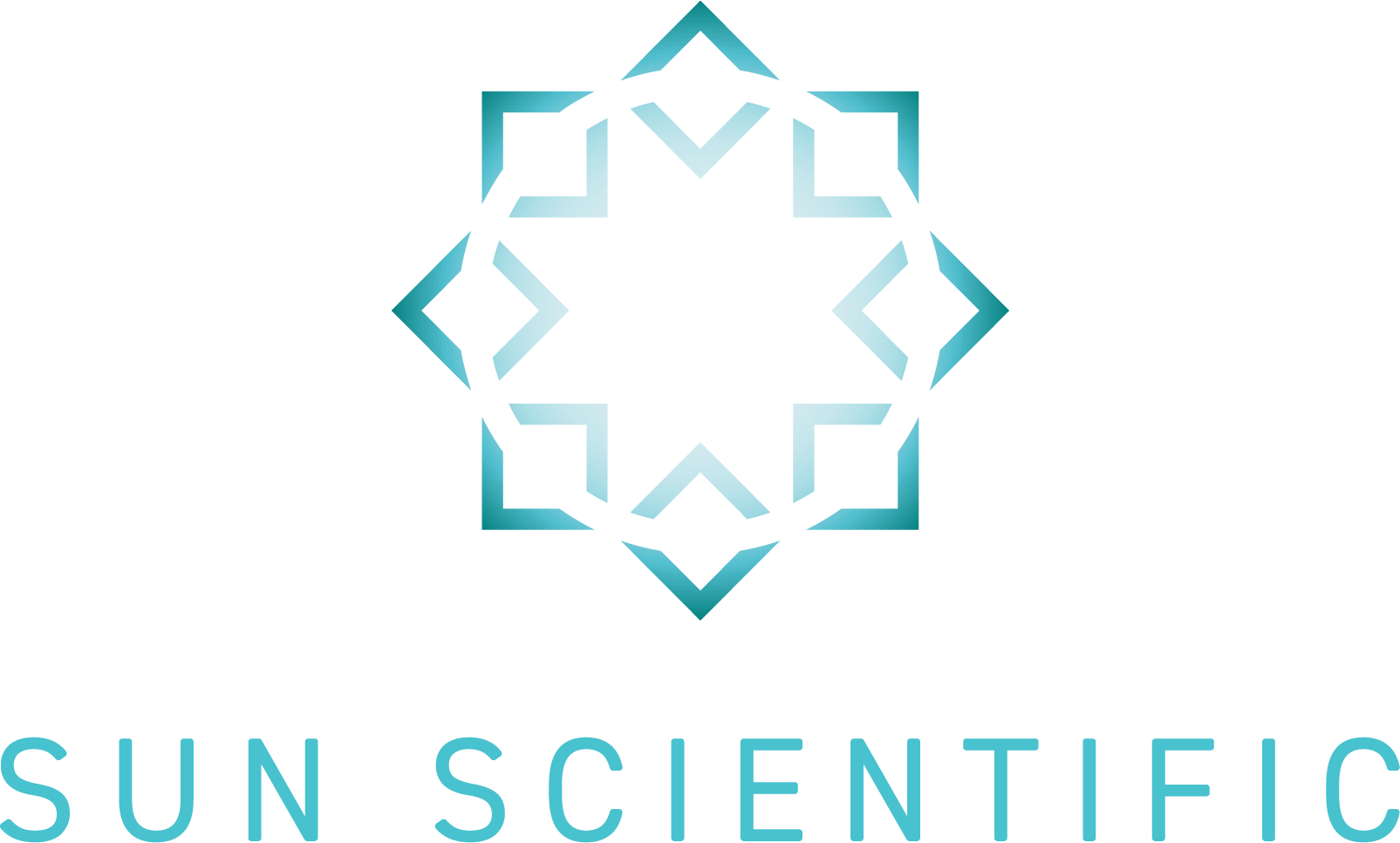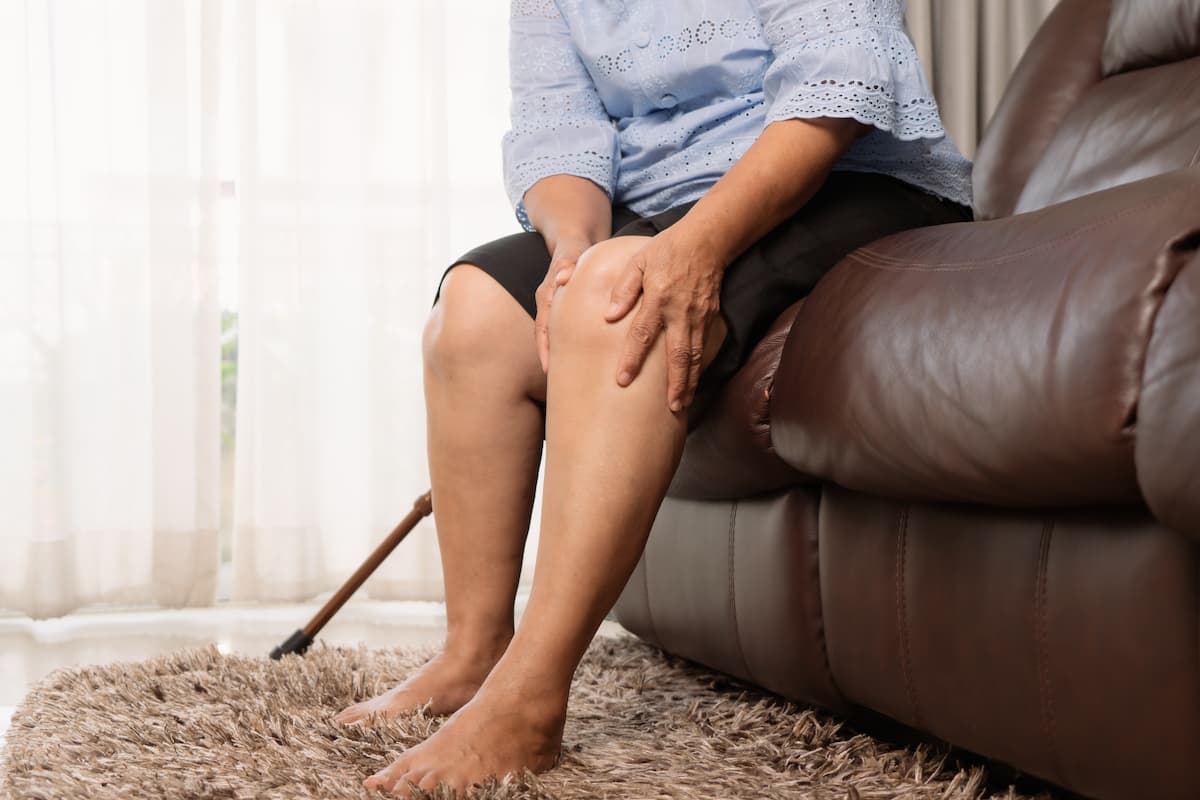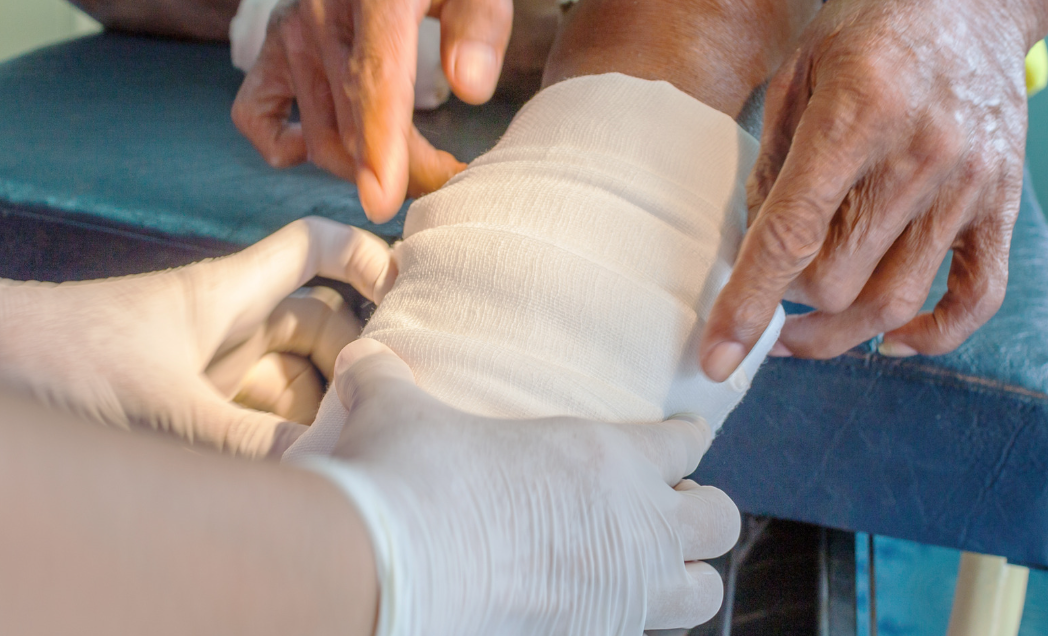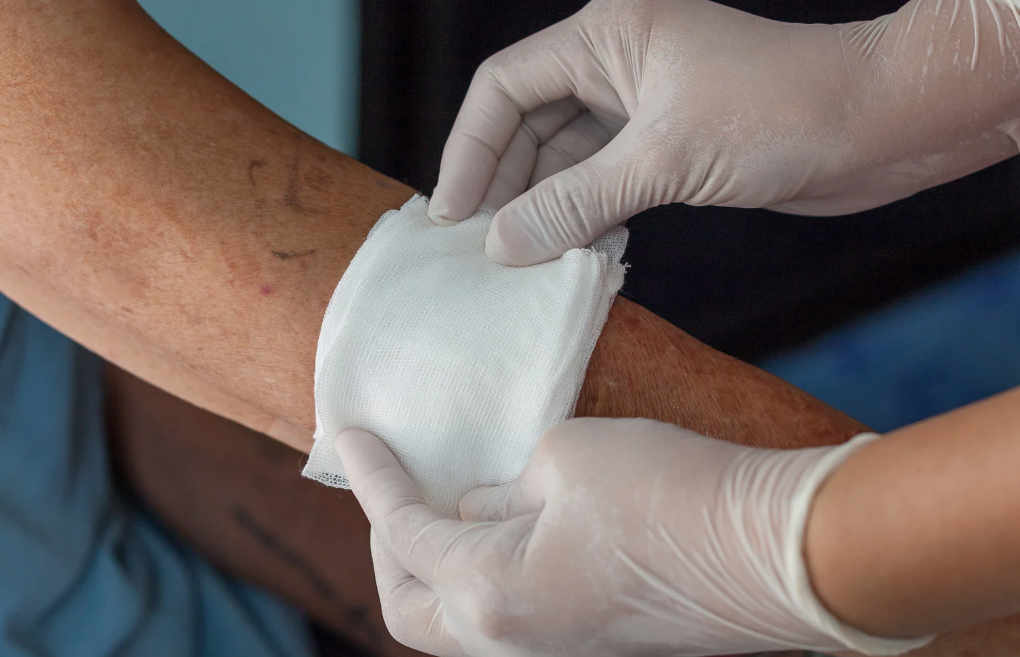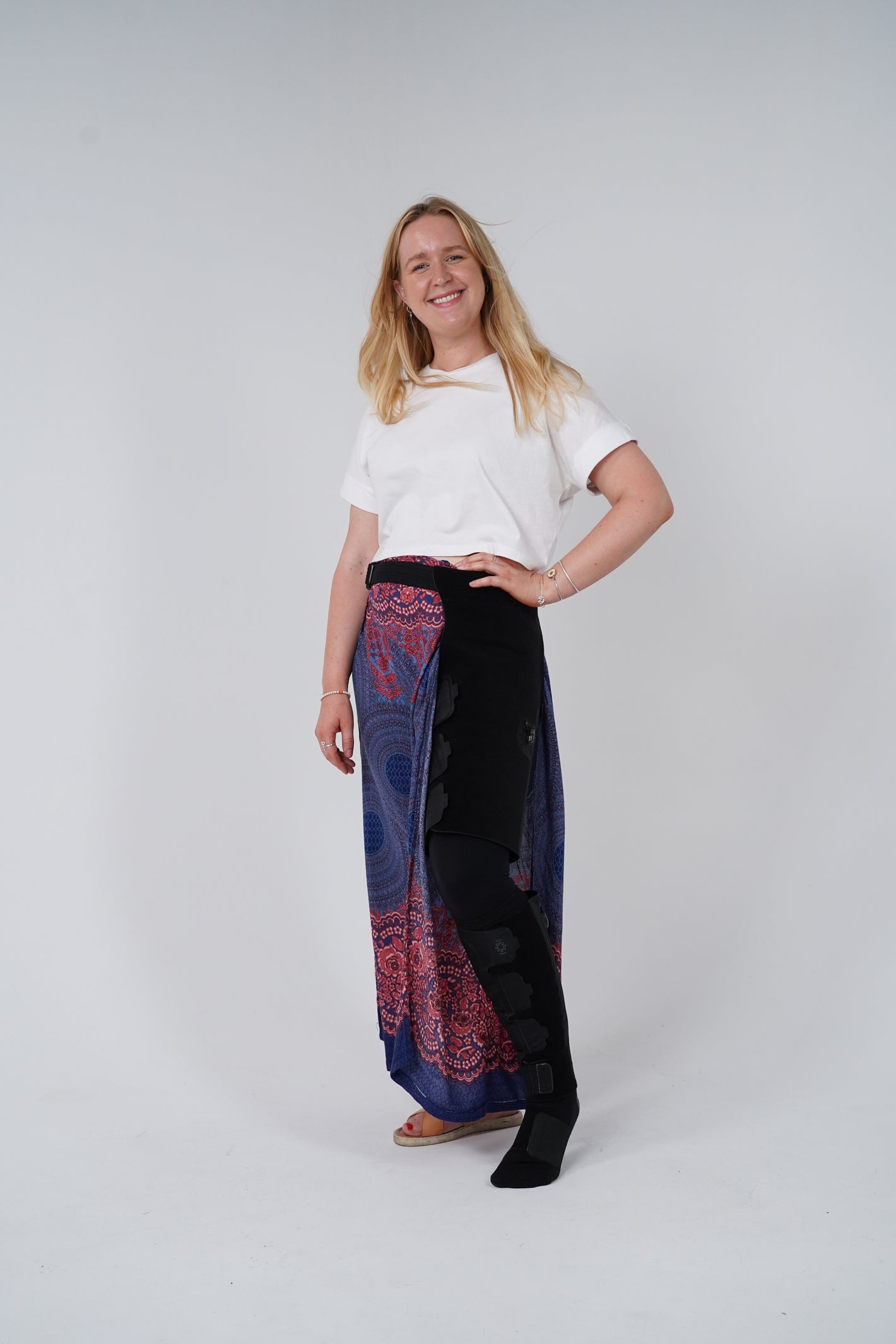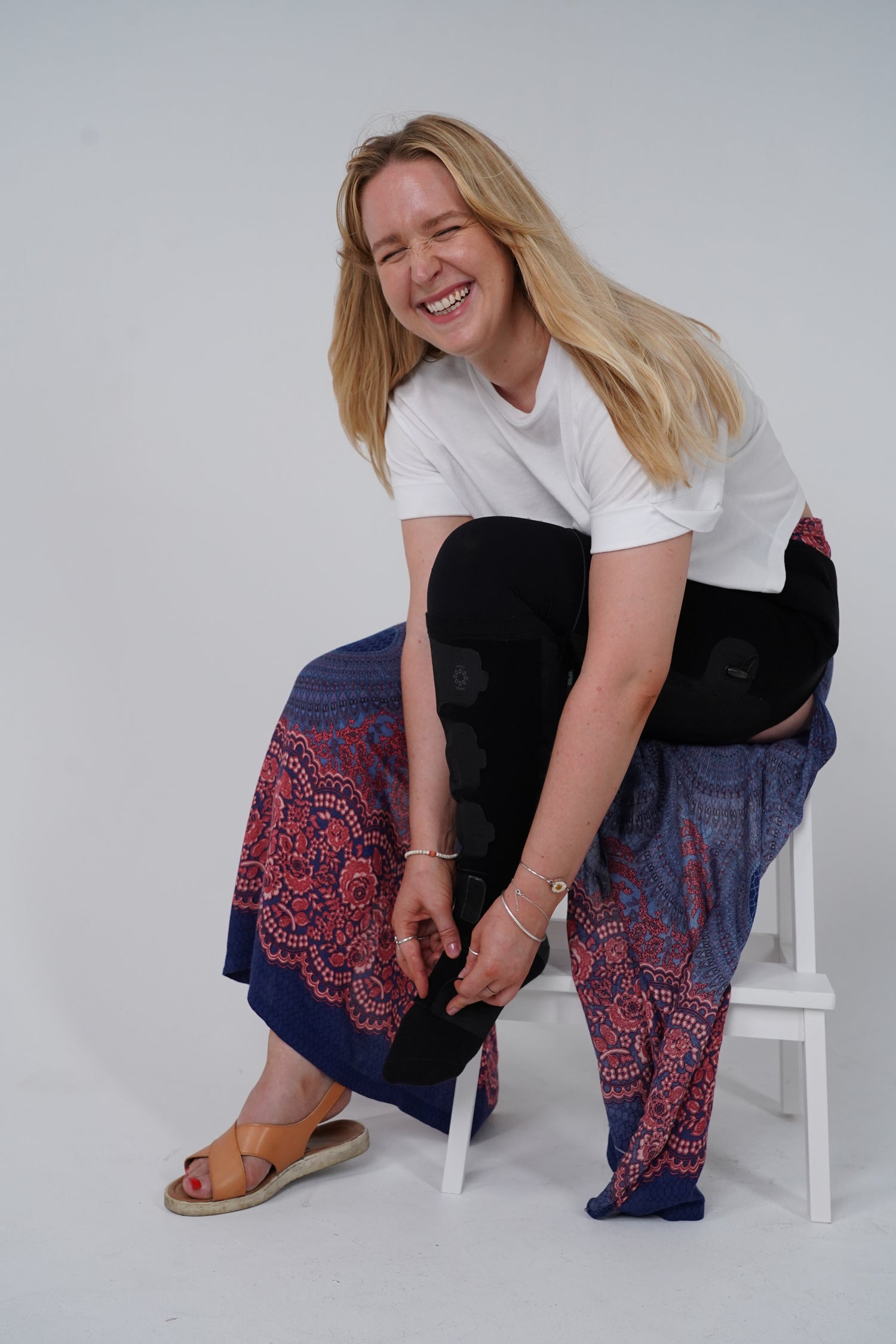
What is Aero-Wrap®?
Aero-Wrap® is offered as a full-leg solution or as modular components, providing targeted swelling
control and personalized relief for the lower extremities.
Aero-Wrap® Modular Full Leg Compression
-
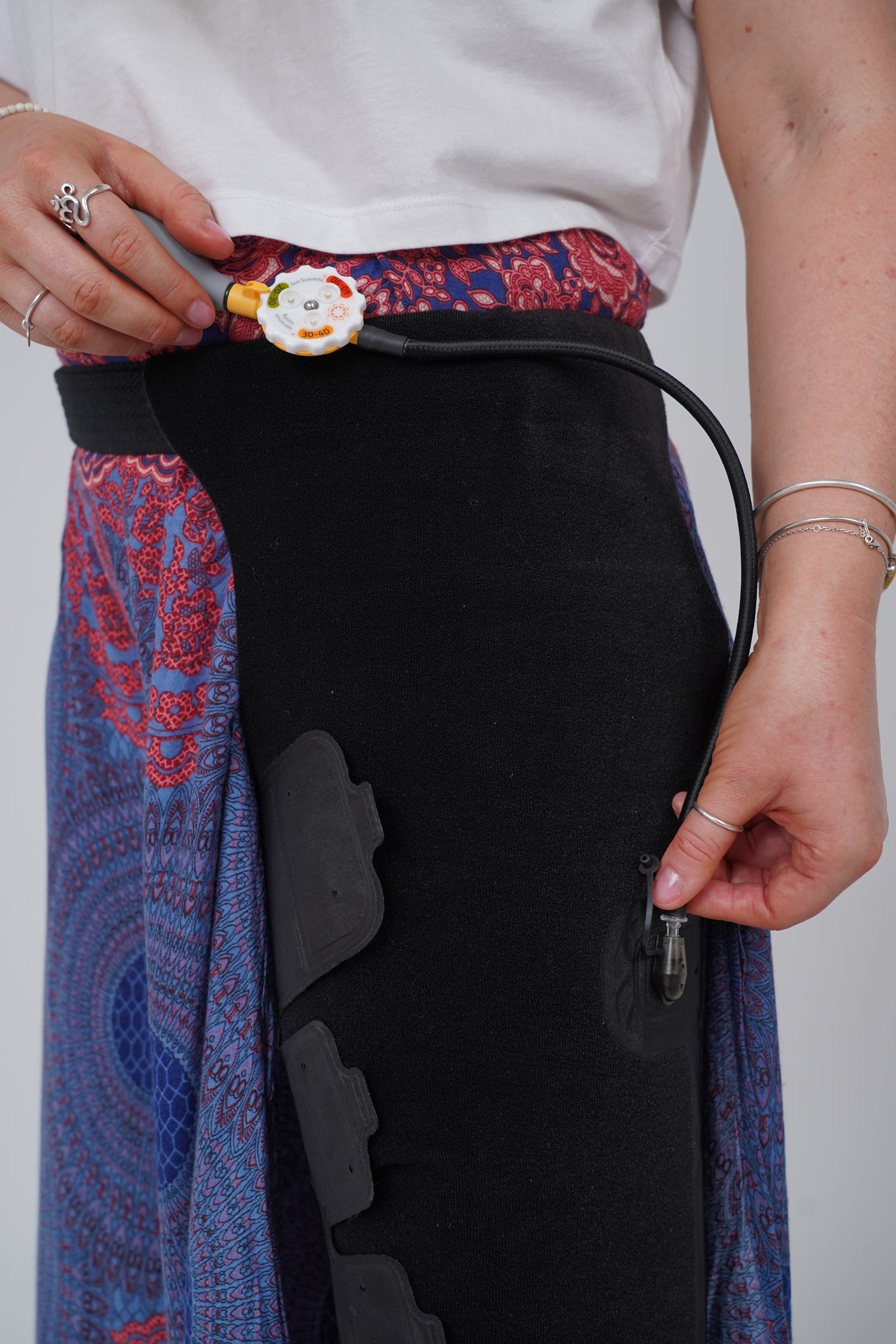
Aero-Wrap® Thigh Gradient Compression System is an easier, more comfortable way to effectively manage your chronic leg swelling and keep you on the go. With a slip-on design, hook and loop attachments, and thin and flexible fabrics Aero-Wrap® brings the best in next generation compression technology.
-
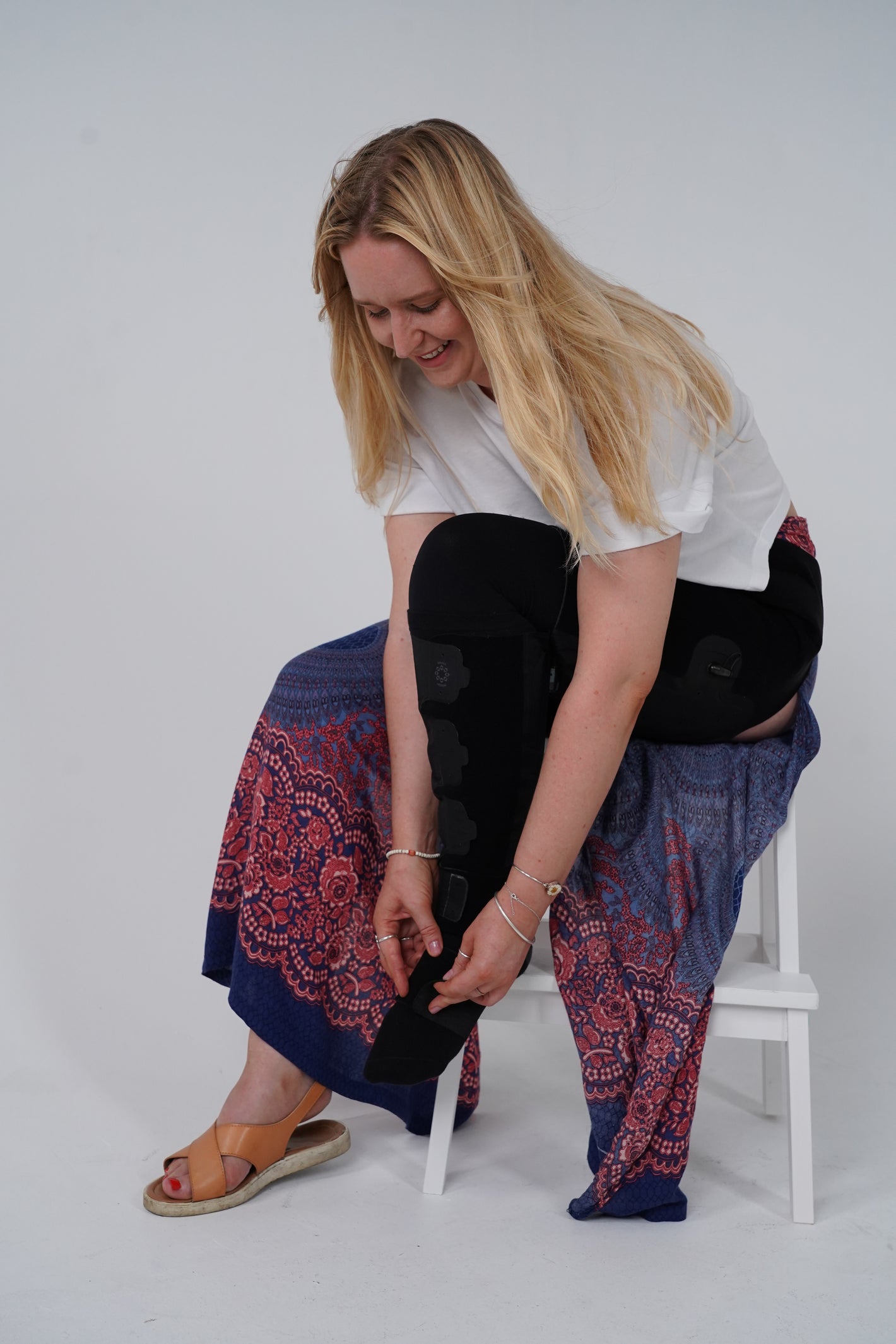
Aero-Wrap® Flex allows for maximum mobility while bringing easy to apply, comfortable compression technology to effectively manage your chronic leg swelling and keep you on the go. It's slip-on design, hook and loop attachments, and thin and flexible fabrics all make Aero-Wrap® Flex the best in next generation compression technology. The separate elastic foot strap provides maximum mobility in the ankle region and gives you the ability to add foot compression on days you need it most.
-
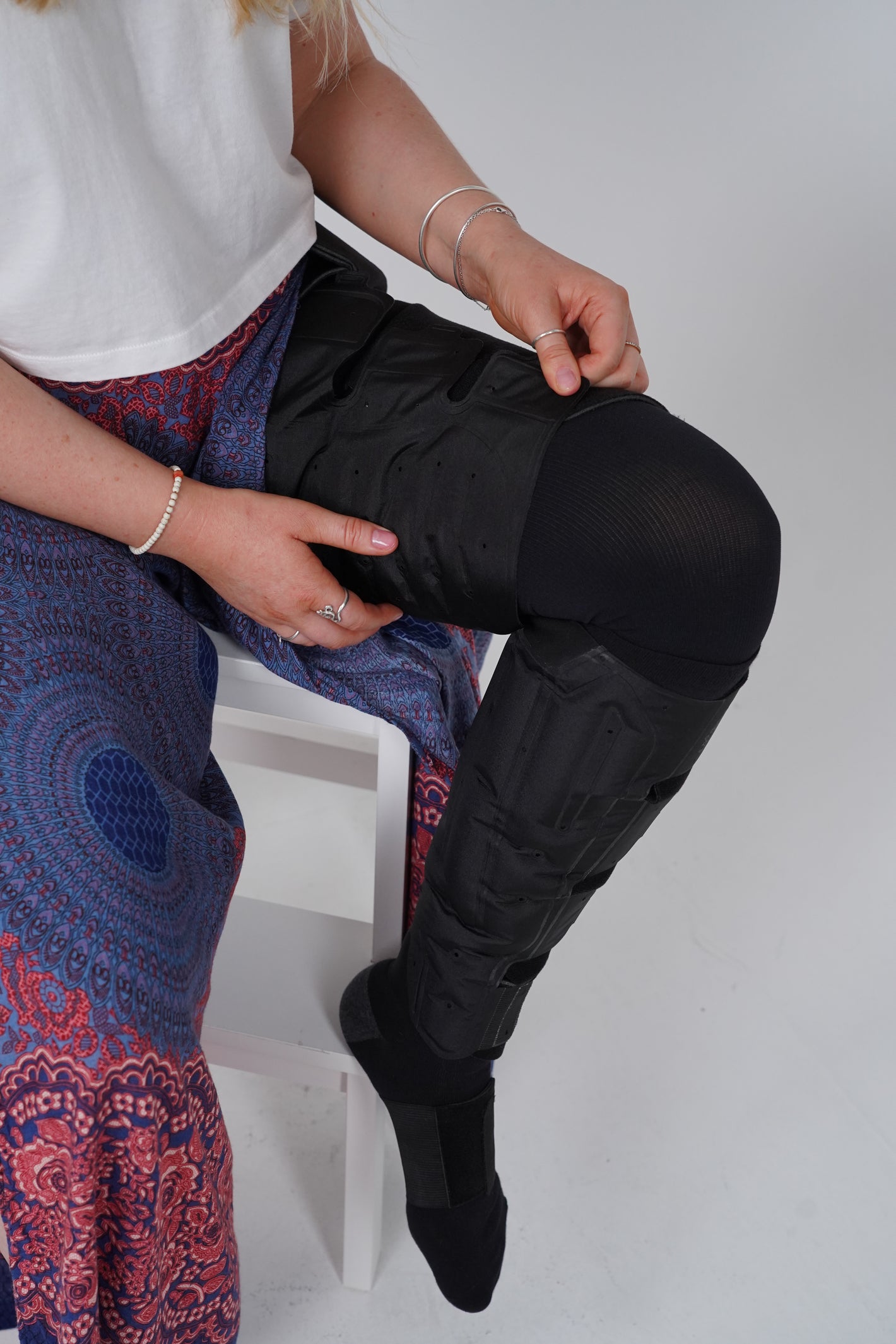
Aero-Wrap® Foot can be worn over a liner or sock or as an outer
layer to provide therapeutic compression or over topical agents or
wound contact layers to provide wound compression.
Aero-Wrap® Features
-
Enhanced Comfort
Aero-Wrap® provides inelastic compression that doesn't stretch, slip, or bunch, making it comfortable while on the
move or at rest. -
Flexible and Discreet
Aero-Wrap® offers lightweight, breathable
comfort that moves with you and blends seamlessly into your attire. -
Easy Application
Aero-Wrap® ensures effortless
compression with no tight elastic adjustments, perfect for those with mobility or dexterity challenges.
-
Adjustable Pressure
Dial-in compression with the Aero-Gauge hand pump for precise, tailored pressure control.
-
All-Day Support
Maintain accurate compression and
relief all day long with Aero-Wrap®
products, designed for long-lasting
wear and effectiveness.
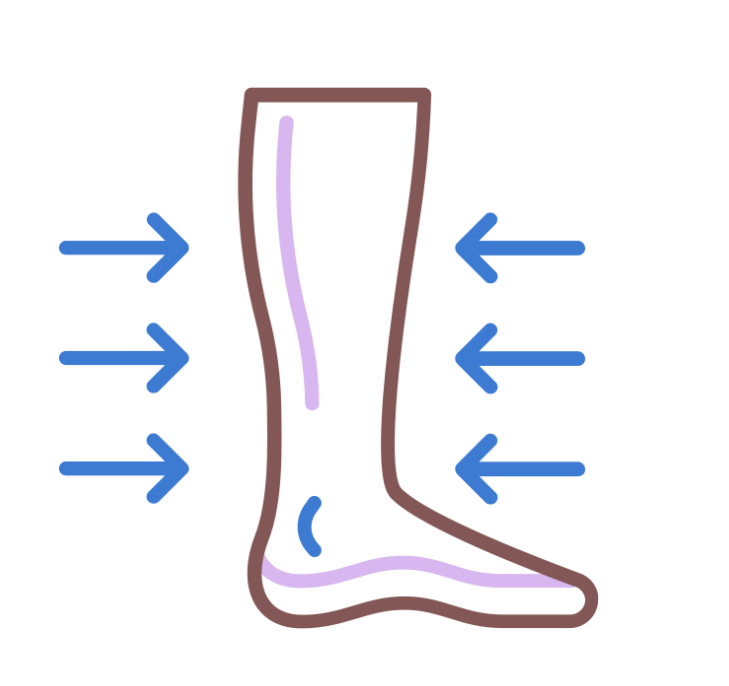
Why Compression Works
Compression therapy is the application of external pressure to the leg. It works by acting as an outside support to prevent swelling and by enhancing the body's natural ability to return fluid from the legs against gravity, with two important methods of action:
1. A Supporting Effect – helps to reduce the available limb volume to manage the amount of leg swelling.
2. A Dynamic Effect – that compression causes that helps improve circulation of blood and fluid, particularly when the user walks around. Compression squeezes the circulatory system into better contact with the muscles (for example, calf with lower-leg compression) to improve the body’s efficacy of fluid movement. Those with chronic venous disease may not get fully effective circulation without compression.
Gradient compression is a standard treatment and prevention for lower-leg venous disease and lymphedema. Gradient compression squeezes more at the ankle and less towards the knee, helping move blood back towards the heart.
Chronic Venous Disease
Venous swelling can be the result of damaged vein valves allowing the back-flow (reflux) and pooling of blood in the lower leg. This pooling causes the venous pressure to increase, weakening the veins and further compromising the venous blood-flow.
If the swelling is not managed it can become Chronic Venous Insufficiency (CVI), which requires intervention / management. CVI can manifest in different levels of severity. Due to the progressive nature of the disease, unmanaged venous swelling and hypertension can lead to venous ulcers, which are open sores that are often slow to heal.
Lymphedema
Lymphedema is when fluid builds up in the the lymph system and is unable to adequately drain. This typically occurs in the arms or legs. There are various causes of lymphedema: Congenital, Post Surgery, Radiation, Infections.
Current preventative methods include manual lymphatic drainage, lymphatic pumps, and compression stockings. The drawbacks surrounding these measures are that manual drainage requires a trained expert, lymphatic pumps are restrictive, and typical compression stockings often are too tight and difficult to put on.
How Compression Helps Chronic Venous Insufficiency (CVI)
-
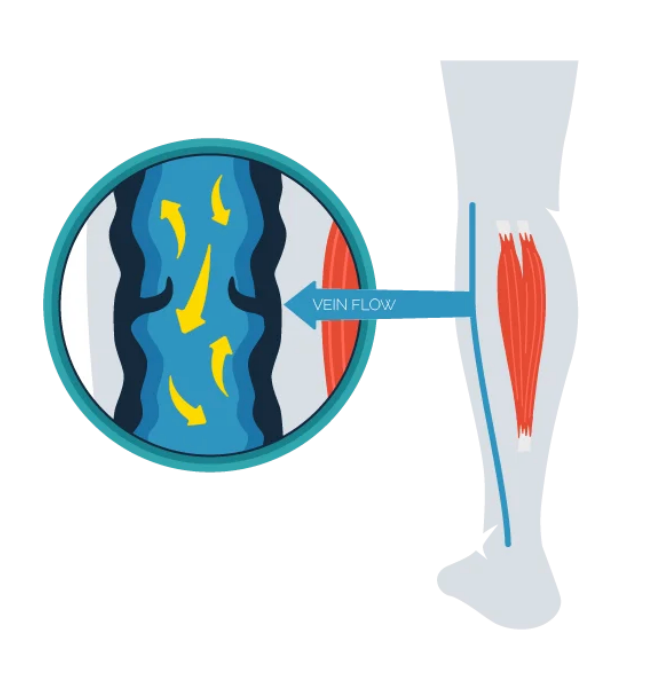
Improves Venous Return: Compression supports the veins by applying external pressure, reducing venous pooling and enhancing blood flow back to the heart.
-
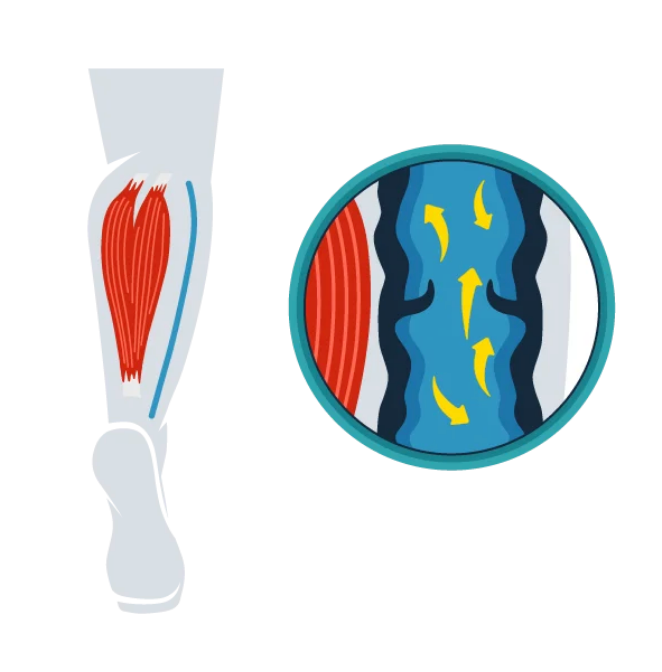
Reduces Swelling: By promoting circulation and preventing fluid accumulation, compression helps alleviate swelling and discomfort associated with CVI.
-
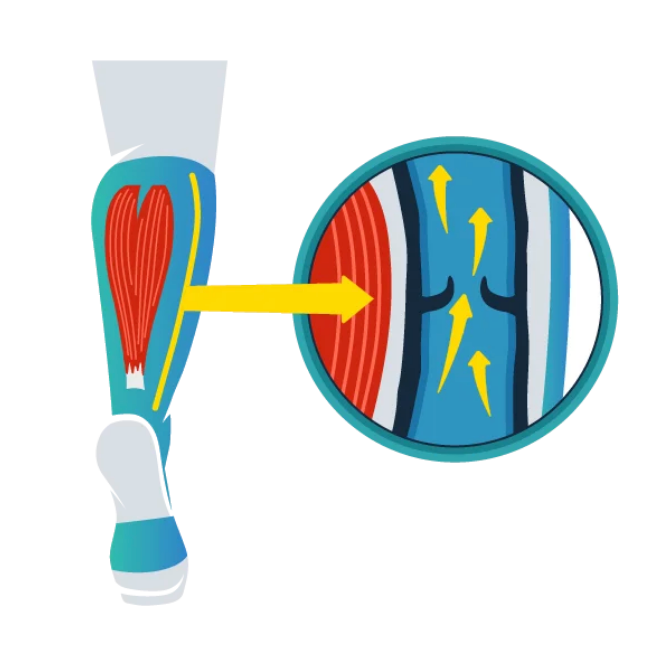
Relieves Venous Pressure: Compression therapy reduces high venous pressure, minimizing symptoms such as pain, fatigue, and the progression of venous ulcers.
Treating Venous Leg Ulcers
Venous ulcers don't heal like a normal cut, because they aren't like a normal cut. Venous leg ulcers are open sores associated with underlying venous disease. There is a lot of detail involved, but the basics are pretty simple, to heal a venous leg ulcer one has to:
1. Manage the wound, providing a healthy place for skin to regrow
2. Manage the underlying venous disease, reversing the venous hypertension at the root of the problem.
